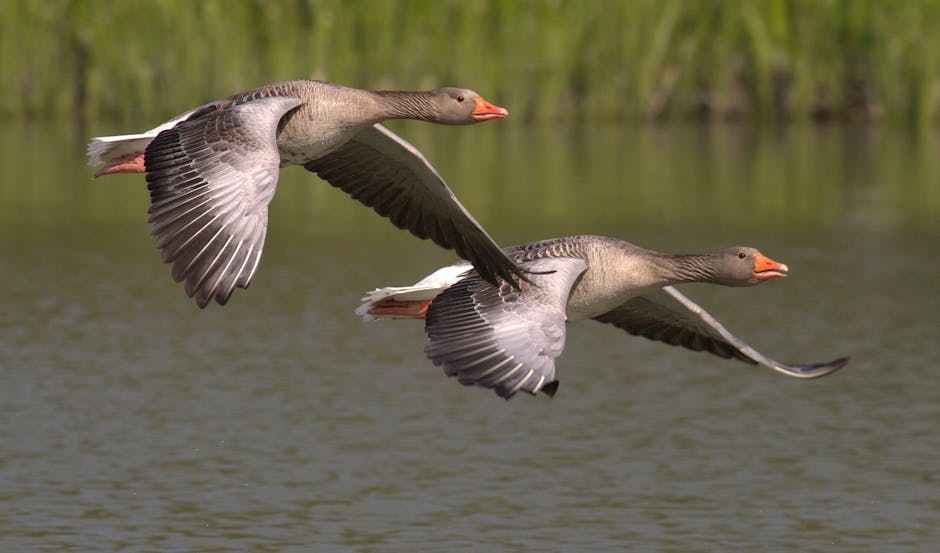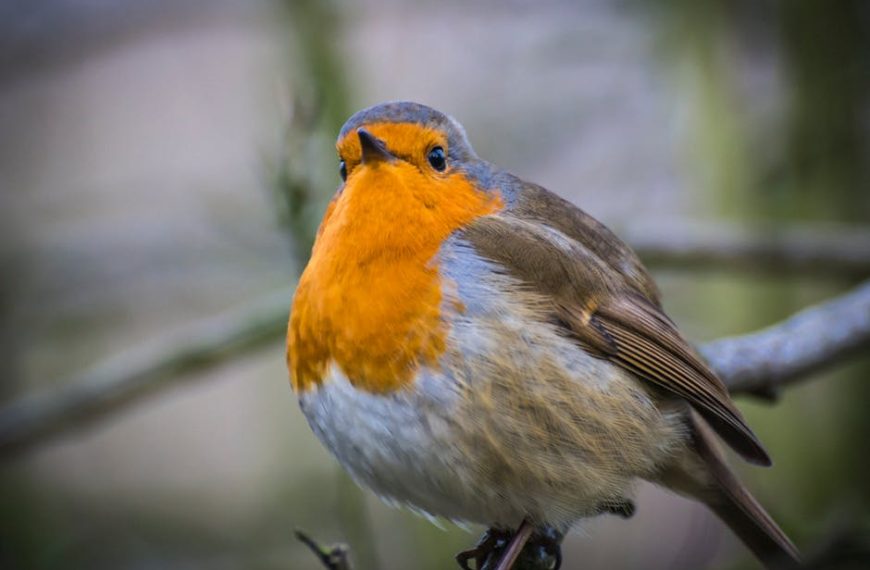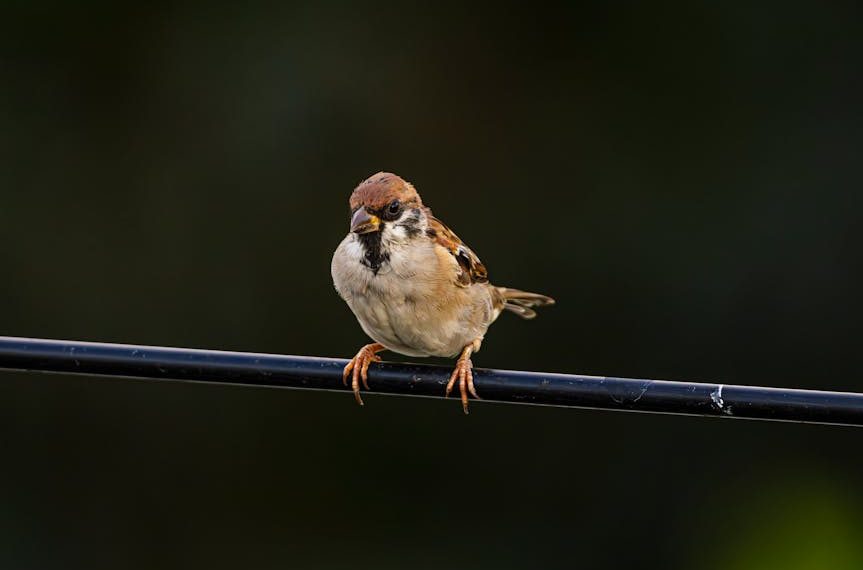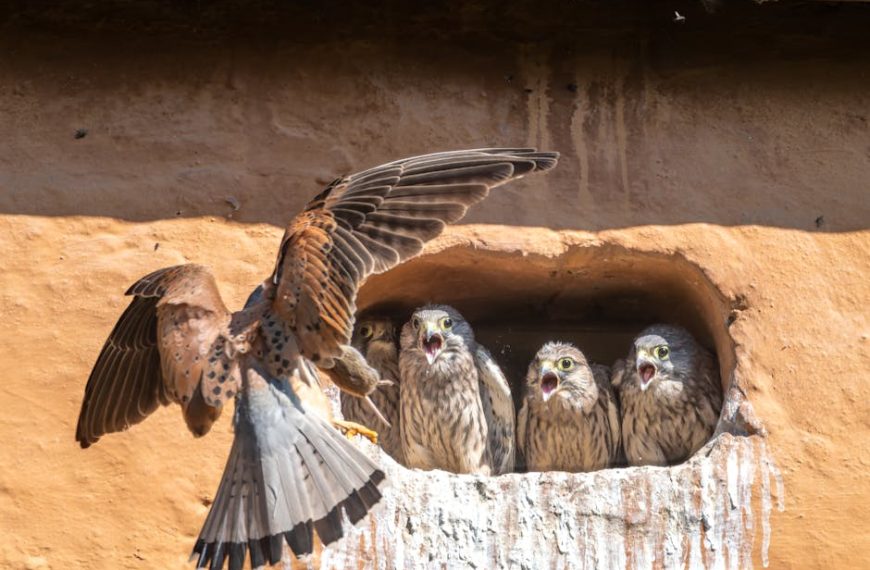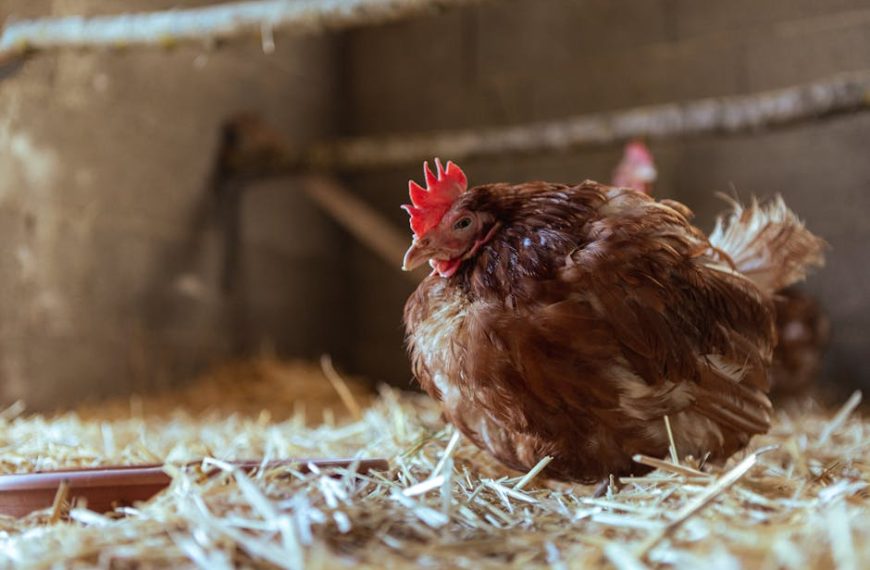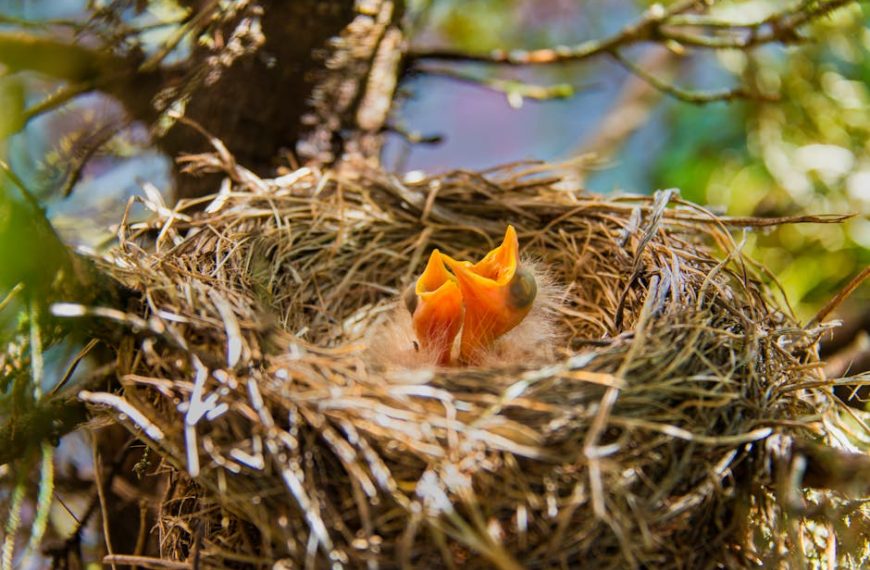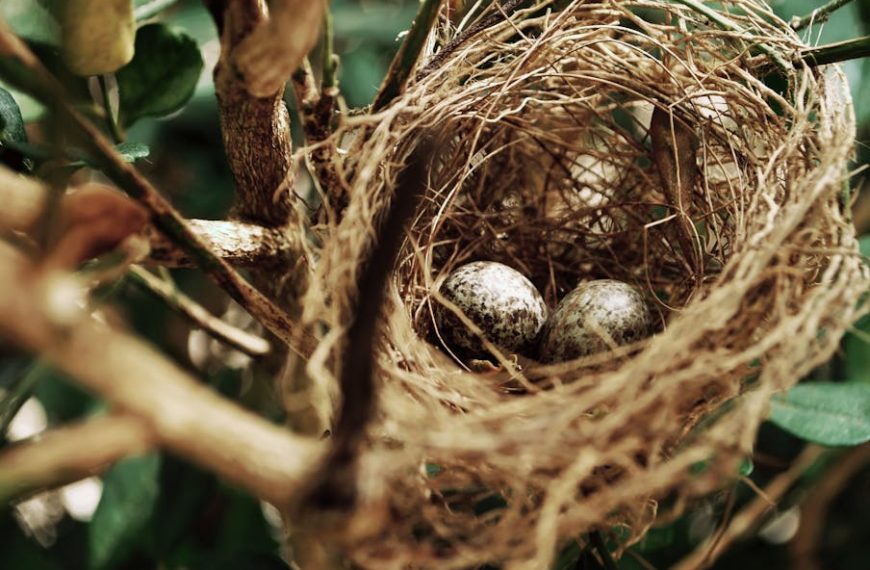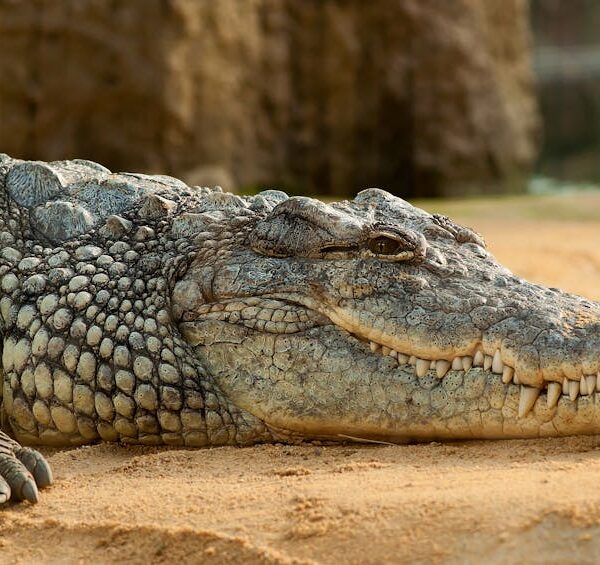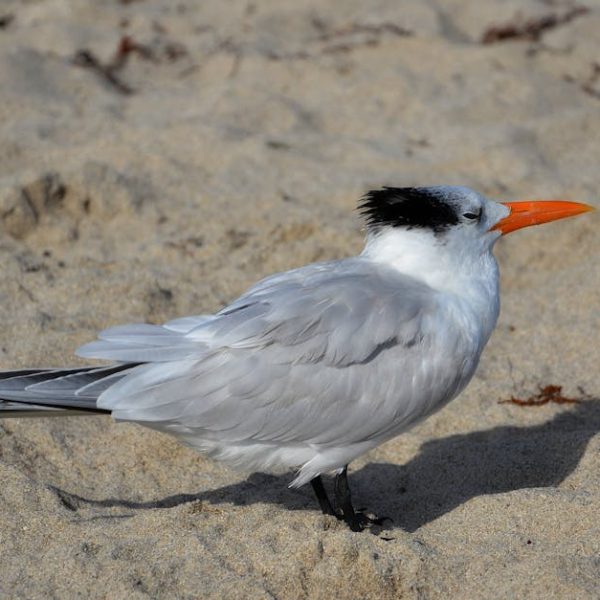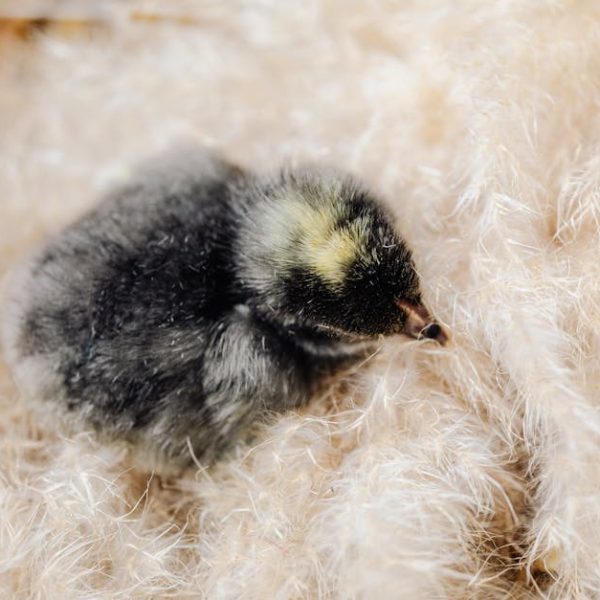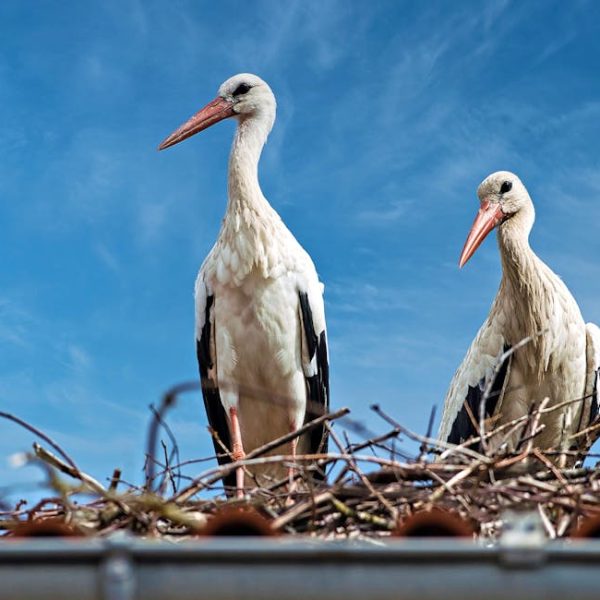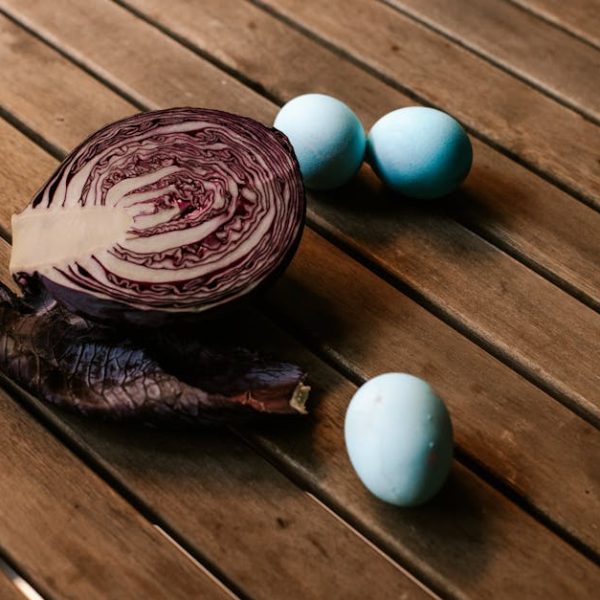Birds, fascinating creatures that they are, follow seasonal patterns that drastically influence their breeding habits and egg-laying schedules. Their intriguing life cycles are shaped by environmental factors such as food abundance, predation risks, and weather conditions. These biological clockworks vary drastically with the changing seasons and geographic locales. Let’s embark on an exploration of how these factors contribute to when our feathered friends lay their noble eggs.
Spring: A Time of Renewal and Reproduction
Synonymous with regrowth and rejuvenation, spring is a busy time for birds. Indeed, many species choose to breed during this season, capitalizing on the bountiful food resources and gentler weather conditions that foster offspring survival. Early birds like robins and sparrows, for example, start the laying process as early as February or March. Other species like the American Goldfinch, Barn Swallow, and Belted Kingfisher typically start their reproductive endeavors during this period.
Pro Tip: If you’re keen on making your backyard a haven for these breeding birds, consider installing birdhouses, keeping cats indoors, and avoiding pesticide use to ensure young chicks aren’t disturbed during this critical period.
Summer: A Second Chance for Bird Breeding
Not all birds wrap up their egg-laying responsibilities in spring. For some species, summer provides a second – or even third – opportunity! Species such as Blue Tits, Mourning Doves, and Purple Martins capitalize on these extended daylight hours to reproduce again. However, factors such as heat and aridity can pose challenges to these summer breeders.
- Species Multiple Broods: Starling, House Sparrow, American Goldfinch.
- Species Single Brood: Great Horned Owl, Bald Eagle, Anna’s Hummingbird.
✅ Summer Breeding Signs Checklist: Birds carrying food or nesting materials, repeated visits to the same location, increased vocalizations, protective behavior around chosen nesting sites.
Autumn: The End of Breeding Season for Many Birds
As leaves change colors and temperatures begin to dip, bird breeding activities generally wind down. A decrease in food supply and preparations for migratory journeys often overshadow reproductive prospects. Of course, nature always presents exceptions – some species, like certain owls, begin their breeding period in fall.
Advantages and disadvantages inherently accompany fall breeding. Risk factors include food scarcity, increased predation, and unpredictable weather conditions. On the other hand, less competition and pre-migration fat stores can facilitate successful breeding attempts for these daring few.
✨Autumn Birdwatching Best Practices: Respect nest boundaries, avoid flash photography, keep noise to a minimum, steer clear of feeding or touching the birds.
Winter: A Quiet Time for Most Birds
Winter initially appears barren of bird breeding activity. However, eagle-eyed bird observers are privy to a hidden world. A minority of birds, including eagles and certain owls, utilize the solitary serenity of winter to reproduce, relishing the decreased predation risks and less territorial competition.
Winter Bird Enthusiast’s Pro Tip: The frigid temperatures and scarce food supplies pose challenges to winter-breeders. Consider setting up bird feeders stocked with protein-rich food and maintain ice-free water sources to lend these hardy birds a helping hand.
The Impact of Climate and Geographic Location on Bird Breeding
Climate and geographic location enormously influence when the birds breed and start laying eggs. Equatorial region birds, for instance, may breed throughout the year, capitalizing on the consistent climate conditions. In contrast, species in temperate regions experience starkly different conditions, thus marrying their egg-laying schedules to the availability of resources shaped by seasonal swings. Let’s examine a comparative view to understand these disparities:
| Bird Species | Equatorial Breeding Pattern | Temperate Breeding Pattern |
|---|---|---|
| Baltimore Oriole | Breeds in late dry season when insects abound | Breeds in April to August; focuses on rearing chicks in Spring/Summer |
| Rufous Hummingbird | Can breed year-round due to steady nectar availability | Breeds from March to July; aligns with blooming flowers nectar supply |
| Mountain Bluebird | Not found in the equatorial region | Breeds from April to August; Spring abundance spurs breeding |
✅ Birdwatching Best Practices in different climates: Keep bird identification books, binoculars, and birdwatching apps at hand. Record your observations, noting the, species’ behaviors, numbers, and environments encountered. Such data can contribute valuable insights into various breeding patterns as shaped by location and climate conditions.
By understanding these fascinating egg-laying schedules, we can nurture our collective appreciation for birds and their incredible adaptability. As we respect and protect their breeding timelines, we encourage the prosperity of these fantastic flyers within our cohabited ecosystems.
Key Takeaway:
- The primary breeding season for many bird species is in spring, taking advantage of abundant food and favorable weather conditions.
- The summer season allows a second or third opportunity for some bird species to reproduce.
- Fall generally marks a decrease in breed activity for birds, with exceptions in certain owl species.
- The winter season is a non-breeding period for most birds, but eagles and certain owl species take advantage of lower predation risks.
- Geographic location and climate play defining roles, shaping bird breeding patterns and egg-laying schedules.
Looking at the striking diversity and the adaptive spirit in the avian realm is undeniably inspiring. By understanding these breeding patterns, there is a richer appreciation for these creatures, strengthening our commitment to protect their habitats. In your local environment, you can actively help by creating bird-friendly spaces, engaging in respectful birdwatching, and spreading knowledge within your community.
FAQs
Q: How can I distinguish between birds that breed once a year and those that breed multiple times?
A: Observing bird behavior throughout the year could provide clues. Birds that breed multiple times often display reproductive behaviors like carrying nesting materials or food for their young across multiple seasons.
Q: How much does climate change impact bird breeding patterns?
A: Climate change can dramatically affect bird breeding patterns. For instance, early onset of spring or warmer temperatures may induce earlier breeding in some species, which can cause mismatches between breeding and food availability.
Q: Can human activity disrupt bird breeding patterns?
A: Yes, human activity like deforestation, pollution, and urbanization can disrupt bird habitats, influence food availability, and consequently affect their breeding patterns.
Q: How can I help birds that breed during harsh winter months?
A: You can aid winter-breeding birds by setting up bird feeders with protein-rich food and maintaining ice-free water sources in your garden.
Q: How is birdwatching helpful in understanding bird breeding patterns?
A: Birdwatching allows you to note different bird behaviors and numbers at different times of the year, offering valuable insights into their breeding patterns and adaptation strategies.
We hope this guide has given you a deeper understanding of bird breeding patterns and their relationship with seasons and geography. Please feel free to share this article with other nature enthusiasts, and explore more of our posts for further insights.
